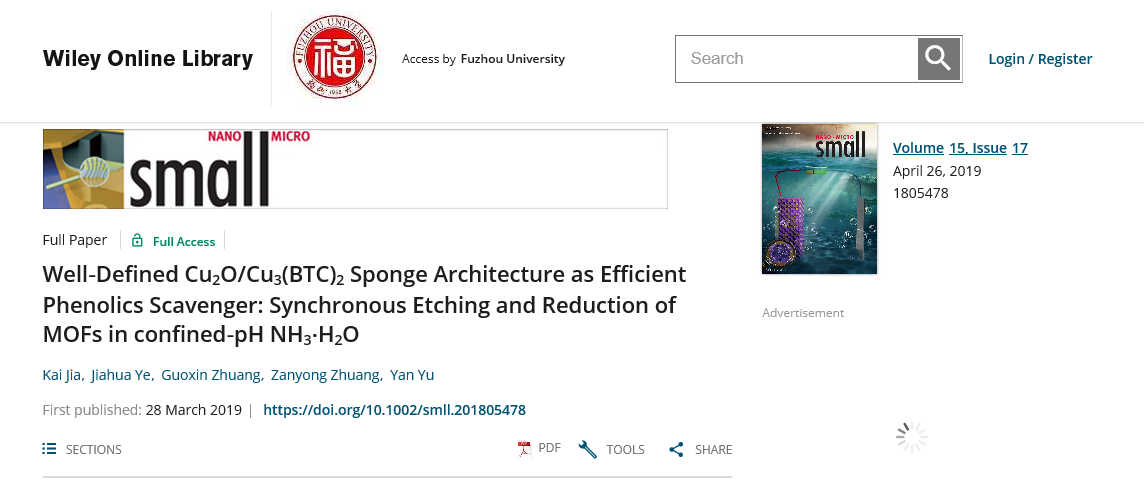Recently, Prof. Yan Yu’s group at College of Materials Science and Engineering of Fuzhou University published a research article entitled “Well‐Defined Cu2O/Cu3(BTC)2 Sponge Architecture as Efficient Phenolics Scavenger: Synchronous Etching and Reduction of MOFs in confined‐pH NH3⋅H2O” in Small.
Fabrication of low‐dimensional nano‐MOFs as well as nanoparticles/metal‐organic frameworks (MOFs) hybrids has sparked new scientific interests but remains a challenging task. Taking Cu3(BTC)2 as a proof of concept, it is demonstrated thats NH3⋅H2O solution of a confined pH value can readily shape the bulk Cu3(BTC)2 into nanoscale Cu3(BTC)2, beyond the need to control the crystal growth kinetics of MOFs. Adjusting the pH of NH3⋅H2O within a much small range (10–11) allows fine tuning over the size and shape of nanoscale Cu3(BTC)2. Particularly at pH = 11, NH3⋅H2O exhibits weak reducibility that triggers a reduction of part of Cu3(BTC)2 into Cu2O, while shaping the other into Cu3(BTC)2 nanowires. Benefiting from the coincidence of reduction and etching effects, the newly generated Cu2O dots can in situ anchor onto adjacent Cu3(BTC)2 nanowires at highly dispersive state, forming a well‐defined sponge‐like architecture built of Cu2O dots and nano‐Cu3(BTC)2. The CuOxderived from annealing of the Cu2O dots/nano‐Cu3(BTC)2 hybrid preserves the sophisticated sponge architecture and high porosity, and exhibits promising applications in phenol scavenging, with efficiency outperforming its counterparts and many other Cu‐based catalysts reported in literature. It is anticipated that the findings here pave the way for the rational design of intricate nano‐MOFs in a more efficient way.

Link: http://apps.webofknowledge.com/full_record.do?product=UA&search_mode=GeneralSearch&qid=1&SID=6FS3V3vWKTAnNUJkCPL&page=4&doc=38